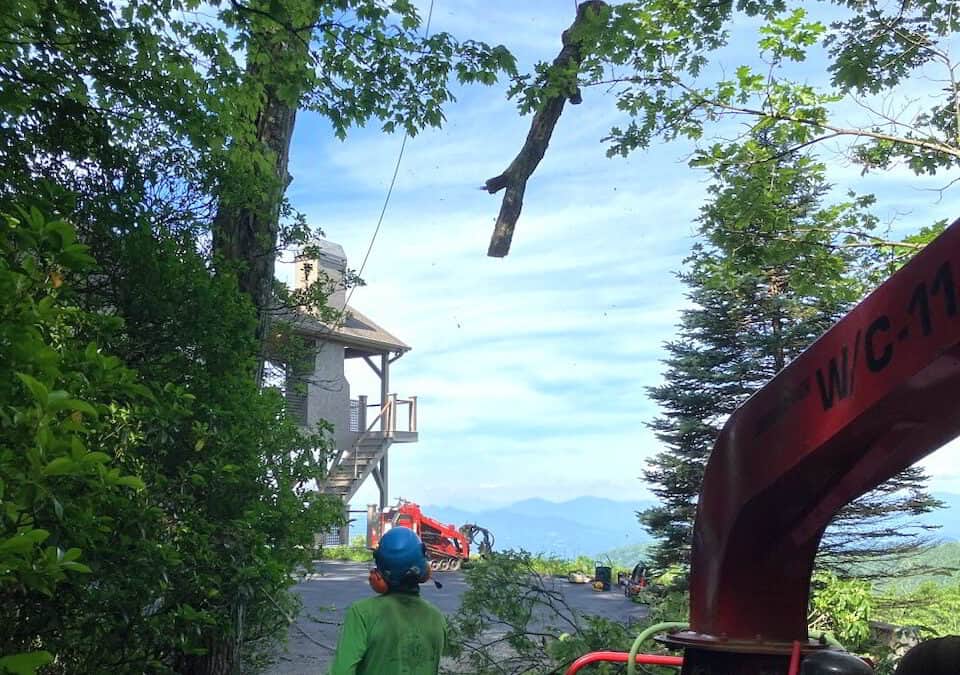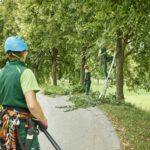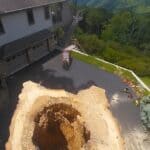Trees add immeasurable value to our landscapes, offering shade, beauty, and environmental benefits; however, they can also pose significant risks under certain conditions that necessitate immediate action. This article will delve into why emergency tree removal is crucial, examining both the inherent risks and the effective solutions available, focusing particularly on the pivotal role played by arborists in such situations.
The Role of an Arborist in Emergency Tree Removal
Arborists are not only skilled in cultivating and caring for trees but are also trained to assess and manage the risks associated with unstable or diseased trees. A typical day might involve a certified arborist examining an old oak that, while majestic, shows signs of internal decay posing a risk to nearby structures. In such cases, the decision to remove a tree urgently isn’t taken lightly but is guided by a thorough risk assessment, often under pressing conditions.
- Certified arborists are trained to identify symptoms of tree diseases and structural weaknesses.
- They use specialized equipment to gauge the stability of trees.
- Their expertise is crucial in deciding whether a tree poses an immediate threat to its surroundings.
Common Causes of Emergency Tree Removal
Several scenarios require the immediate removal of trees. These often include natural disasters like storms or earthquakes, which can destabilize trees or break limbs, creating hazardous conditions. Additionally, trees weakened by disease or pest infestation may suddenly become a danger to people and property. For example, the emerald ash borer, an invasive pest, has been responsible for the destruction of millions of ash trees in the United States alone, often necessitating emergency removal to prevent accidents.
- Natural disasters can cause immediate and unforeseen damage to trees.
- Pests and diseases can weaken trees over time, leading to sudden failures.
- Structural damage from construction or environmental changes may also necessitate urgent tree removal.
Risks of Delaying Tree Removal
Delaying the removal of a hazardous tree can have serious consequences. A tree that might seem stable enough on a calm day can quickly become a threat during a storm, where winds can turn limbs into projectiles, and weakened trunks can fail. Failing to address these risks promptly can lead to property damage, injuries, or even fatalities. Insurance companies often emphasize the importance of removing risky trees to prevent potential liabilities.
- Property damage from falling trees can lead to significant financial loss.
- Physical injury from falling limbs or trees is a serious risk for homeowners and pedestrians.
- Legal liabilities can arise from negligence in managing tree hazards.
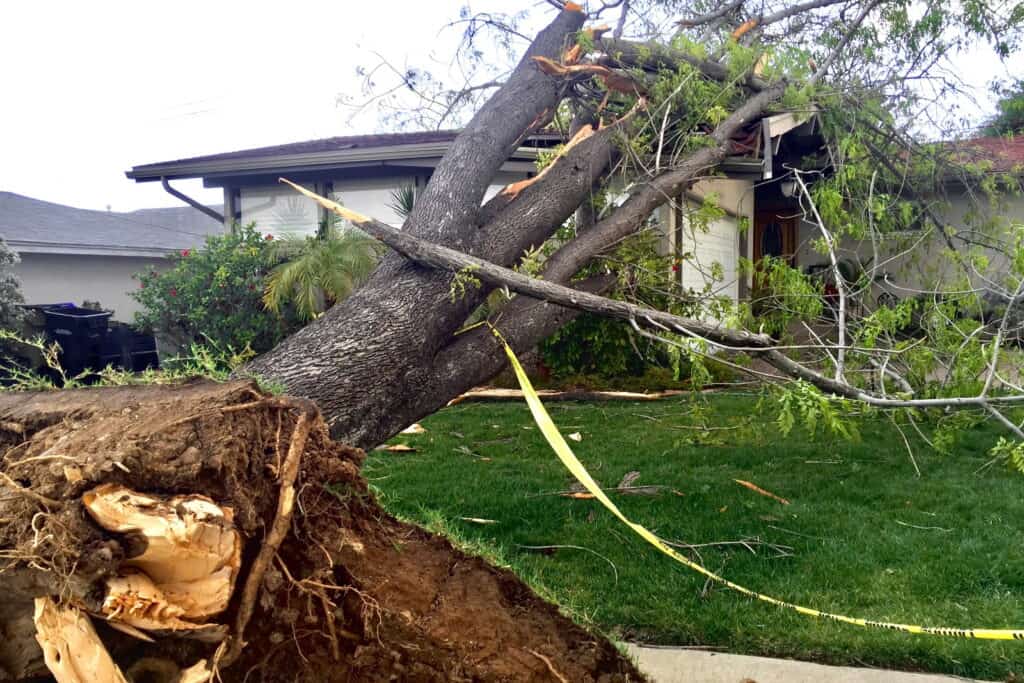
Arborist Techniques for Safe Tree Removal
Arborists employ various techniques to ensure safe and efficient tree removal. This might involve using cranes to remove large trees from urban areas, ensuring minimal disruption and risk to the surrounding environment. Techniques such as sectional dismantling, where a tree is carefully cut into sections and removed piece by piece, are commonly used in confined spaces to prevent damage.
- Use of cranes and other heavy machinery to manage large tree removals safely.
- Sectional dismantling techniques to minimize disruption in tight spaces.
- Rigorous safety protocols to protect property and personnel during removal operations.
Preventive Measures and Regular Maintenance
Engaging a professional arborist for regular tree assessments can significantly reduce the need for emergency removals. These experts can identify potential problems before they escalate into emergencies, advising on treatments or preventive pruning to maintain tree health. Maintaining trees not only ensures their longevity but also reduces the likelihood of unexpected failures.
- Regular pruning can remove potentially hazardous limbs and encourage healthy growth.
- Disease management programs can protect trees from common pathogens.
- Structural supports such as cabling can stabilize trees, extending their safe lifespan.
Choosing the Right Arborist for Emergency Services
Selecting the right professional is critical when emergency tree removal is necessary. Look for arborists who are certified by reputable organizations such as the International Society of Arboriculture (ISA). These professionals adhere to high standards of safety and ethics, ensuring that tree work is done responsibly and effectively.
- Ensure the arborist is certified and has good reviews from previous clients.
- Check for adequate insurance coverage to avoid any liability for accidents.
- Look for specialists in emergency tree care and removal services.
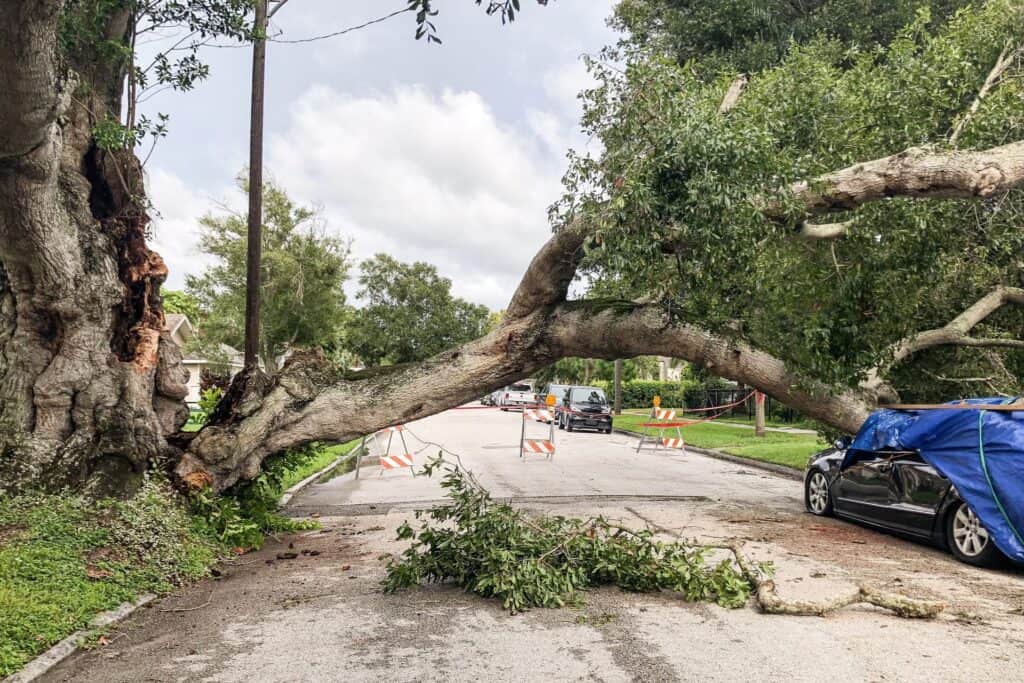
Why Emergency Tree Removal Can’t Wait
Emergency tree removal is a critical service that addresses immediate risks posed by unstable trees, protecting property and lives. Through the expertise of certified arborists, potential dangers are mitigated with precision and care, ensuring public safety and preserving the health of other trees and the broader environment. This reactive measure, while sometimes drastic, is often the only solution to prevent imminent hazards.
Key Takeaways for Understanding Emergency Tree Removal
- Emergency tree removal is often vital for safety and legal compliance.
- Arborists play a crucial role in assessing tree health and managing removal operations.
- Regular maintenance and preventive measures can decrease the necessity for emergency interventions.
Frequently Asked Questions
- What qualifies as an emergency for tree removal?
- Situations where trees pose an immediate risk to people, structures, or power lines due to damage, disease, or destabilization are considered emergencies.
- Can I remove a hazardous tree myself?
- Removing a hazardous tree can be dangerous. It is recommended to hire certified arborists who have the skills and equipment to do it safely.
- How often should I have my trees inspected?
- It’s wise to have trees inspected at least once a year or after major storms to assess their condition and stability.
- What happens to the removed tree?
- Removed trees are typically cut into manageable pieces, which can be used as firewood, mulch, or removed entirely from the site by the tree service company.
- Is emergency tree removal covered by insurance?
- Many homeowner policies cover damages and sometimes the cost of removal for trees that fall on insured structures, but it’s best to consult your specific policy for details.
Precision Arborcare is your trusted arborist for expert tree services in Asheville, NC. Built on a passion for trees and a commitment to providing top-quality arborist care, our company excels in technical skills while prioritizing clear communication, customer satisfaction, and safety. Our team consists of certified arborists and tree care professionals dedicated to enhancing and preserving the natural beauty of your landscape. We pride ourselves on being approachable, friendly, and professional arborists, ensuring that our clients feel confident and informed throughout every step of their tree care journey. Precision Arborcare offers tailored arborist services to meet the specific needs of each client, from routine maintenance and emergency tree services to specialized care for your trees.
